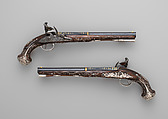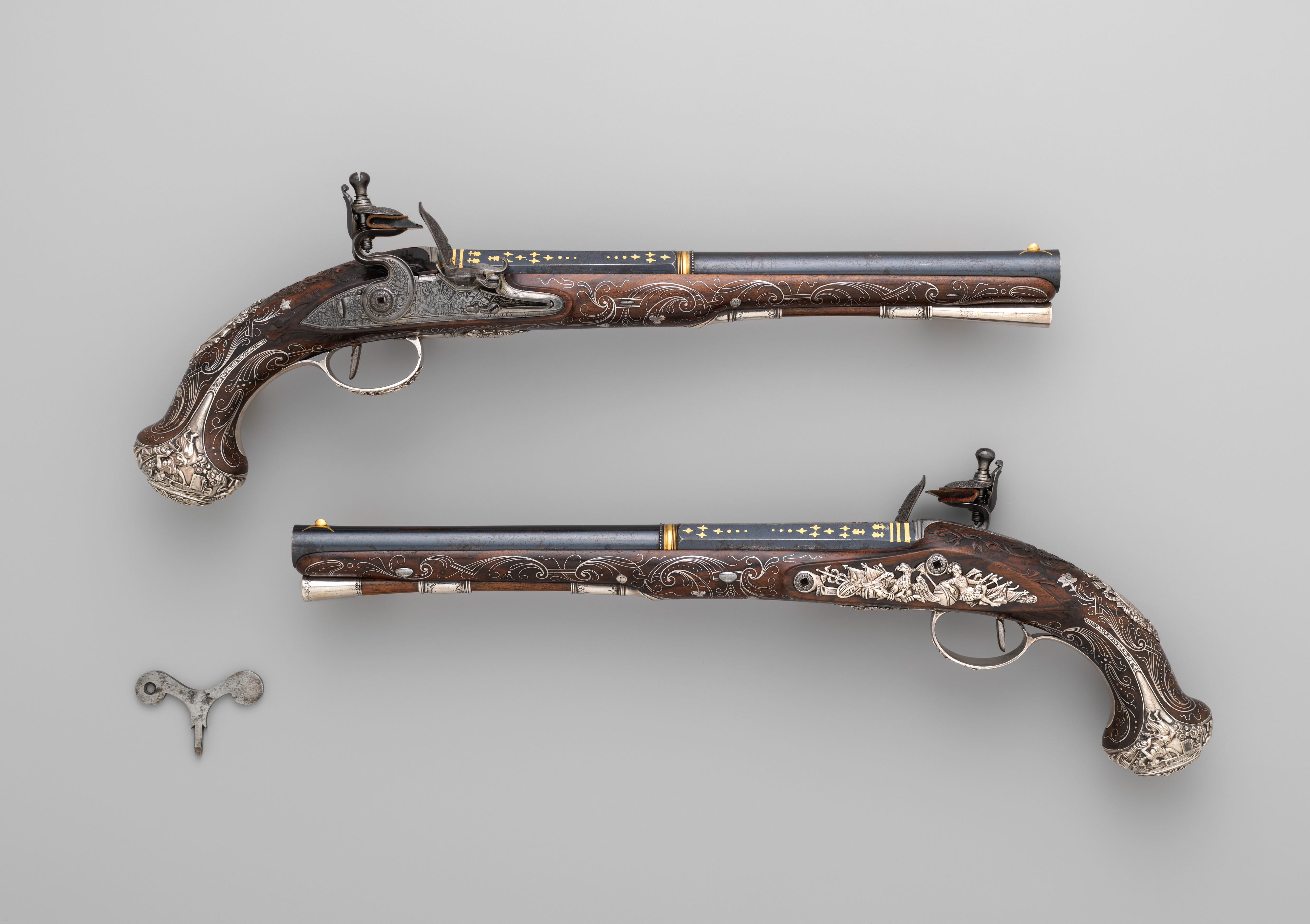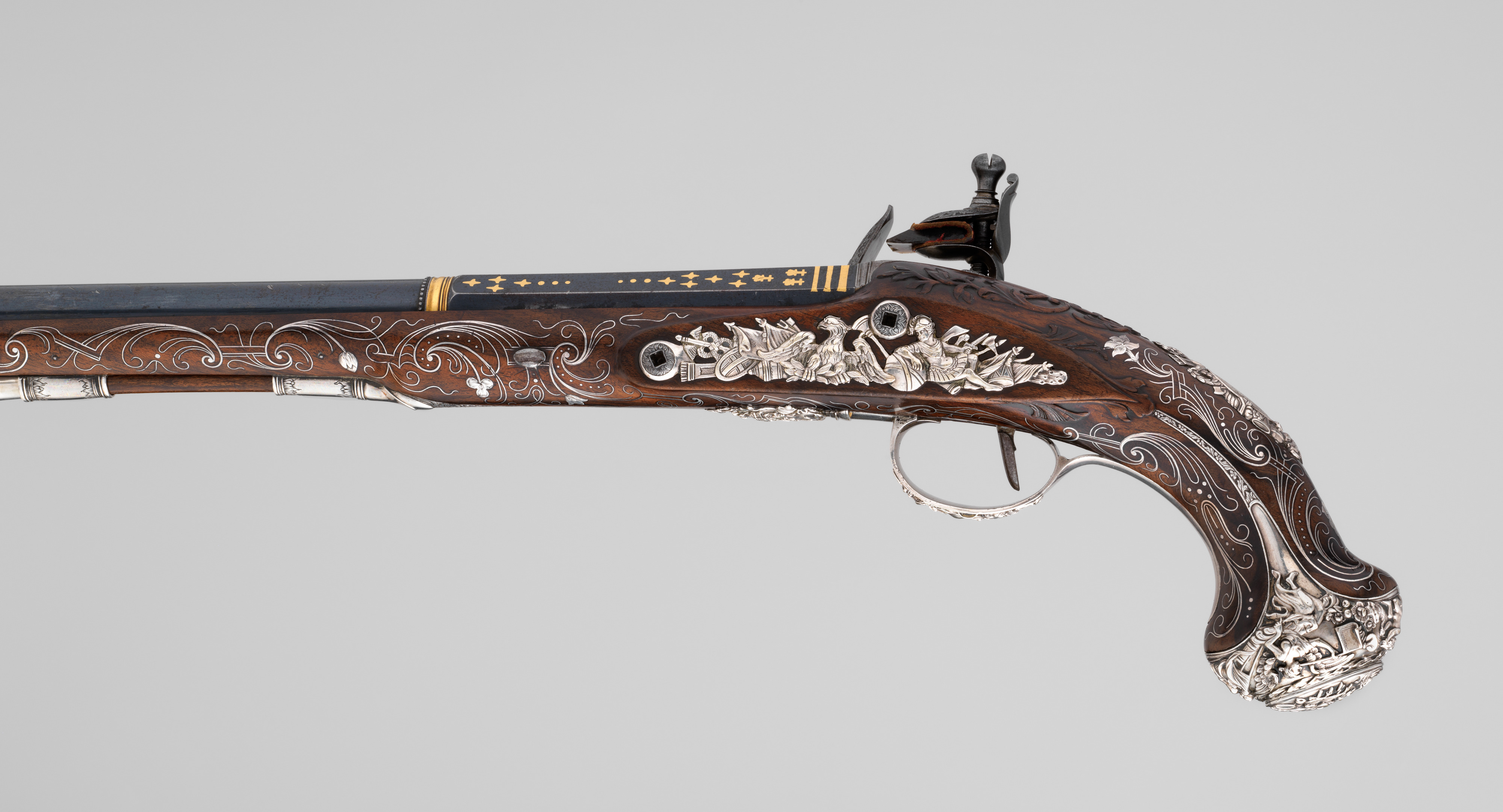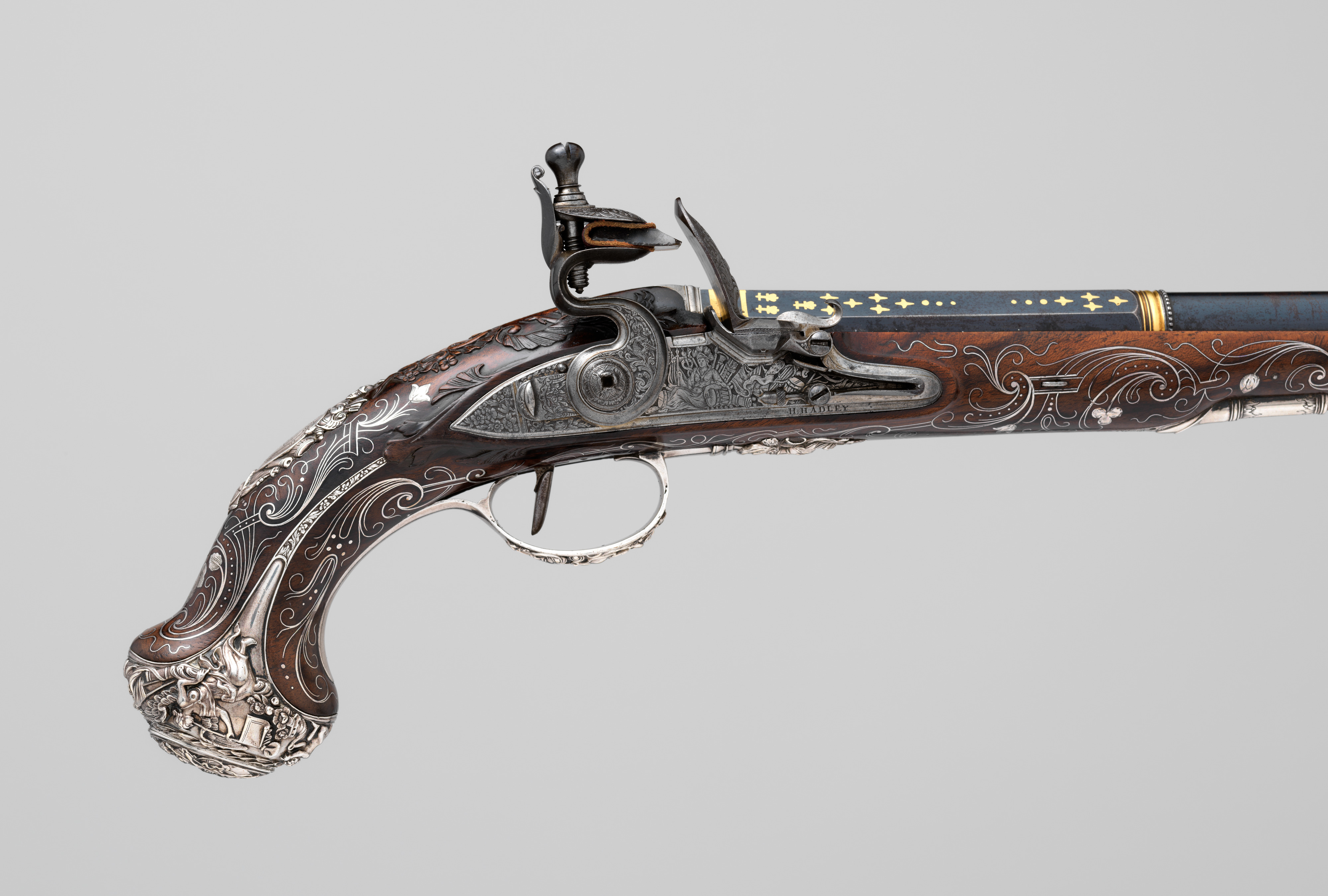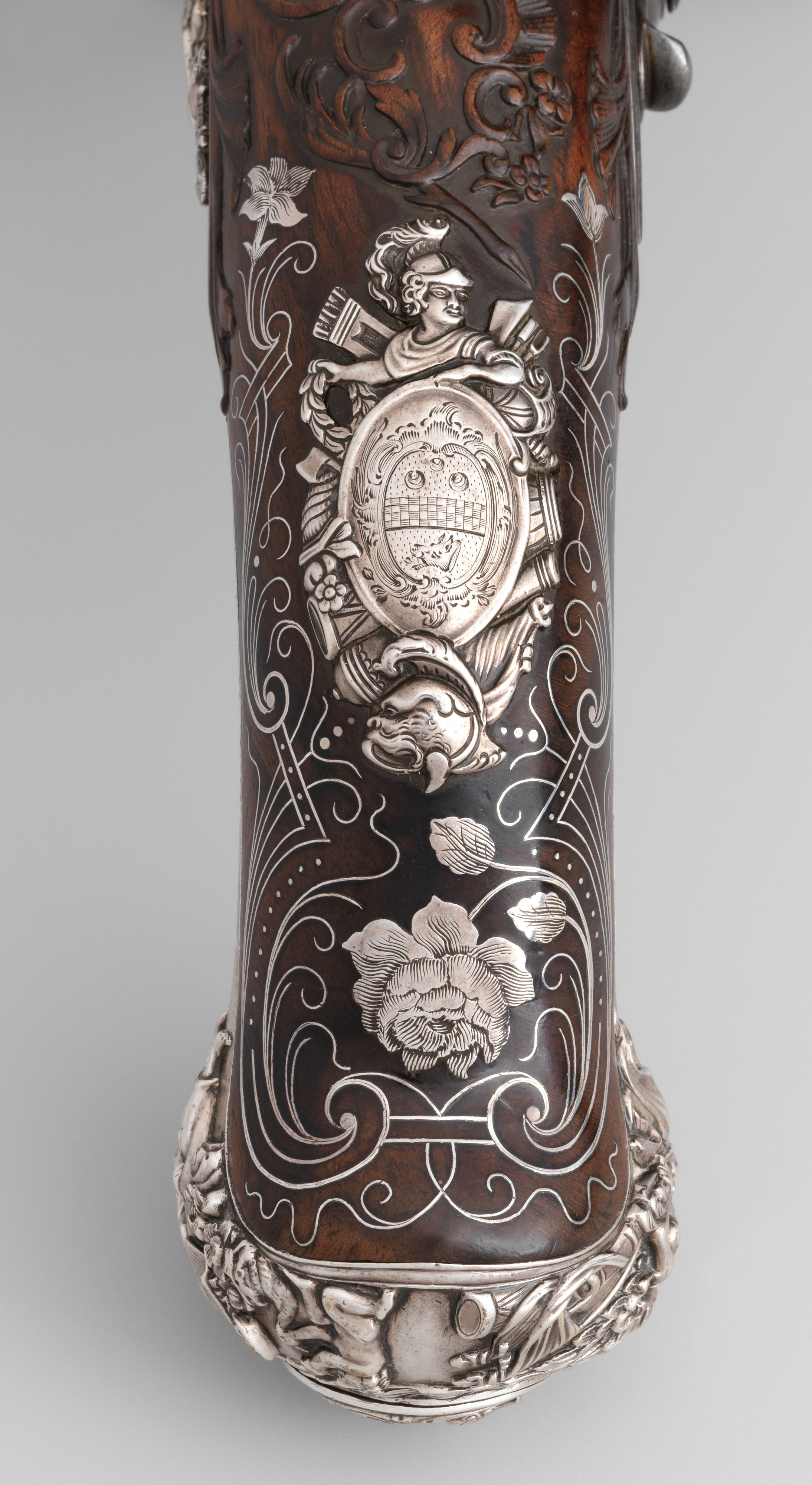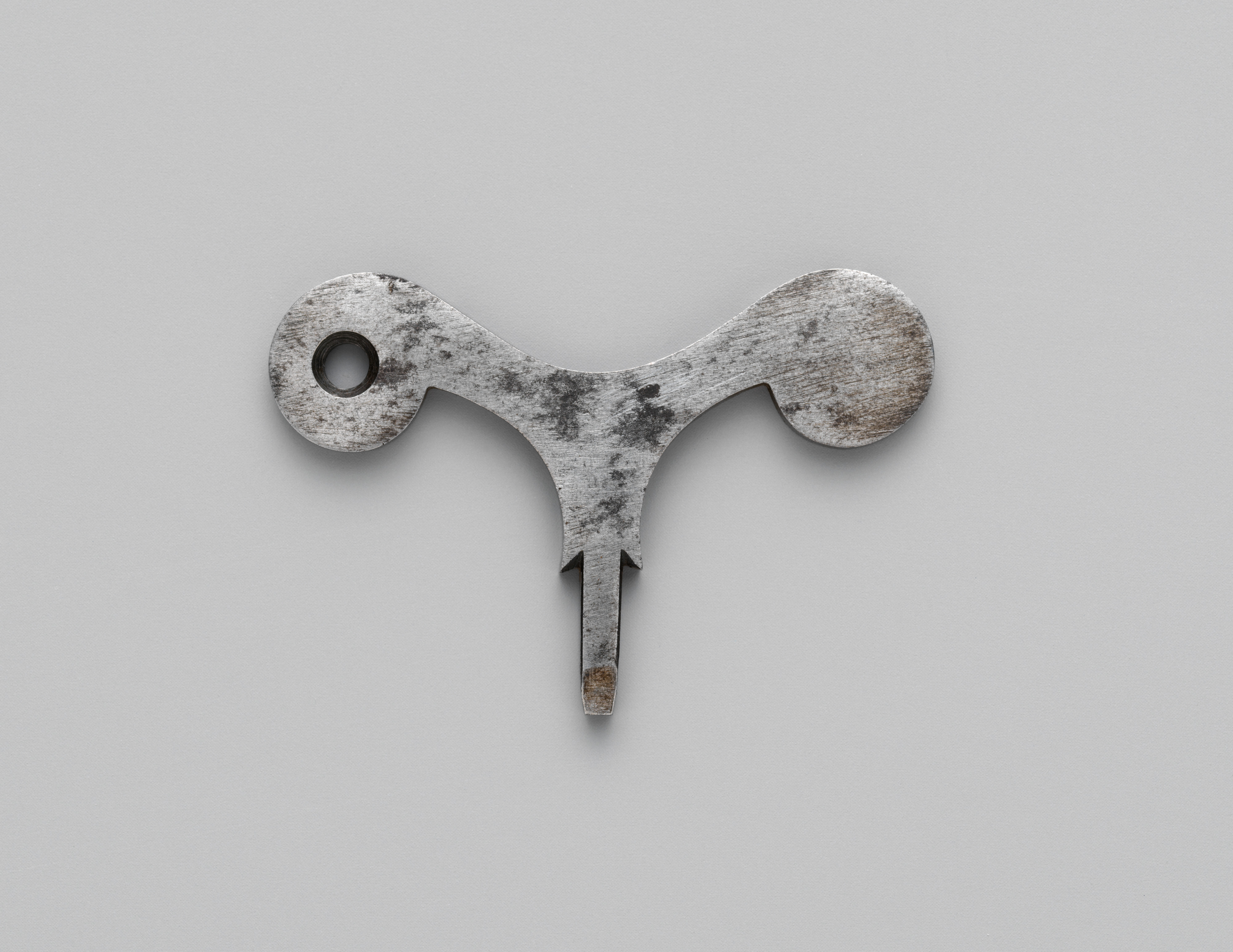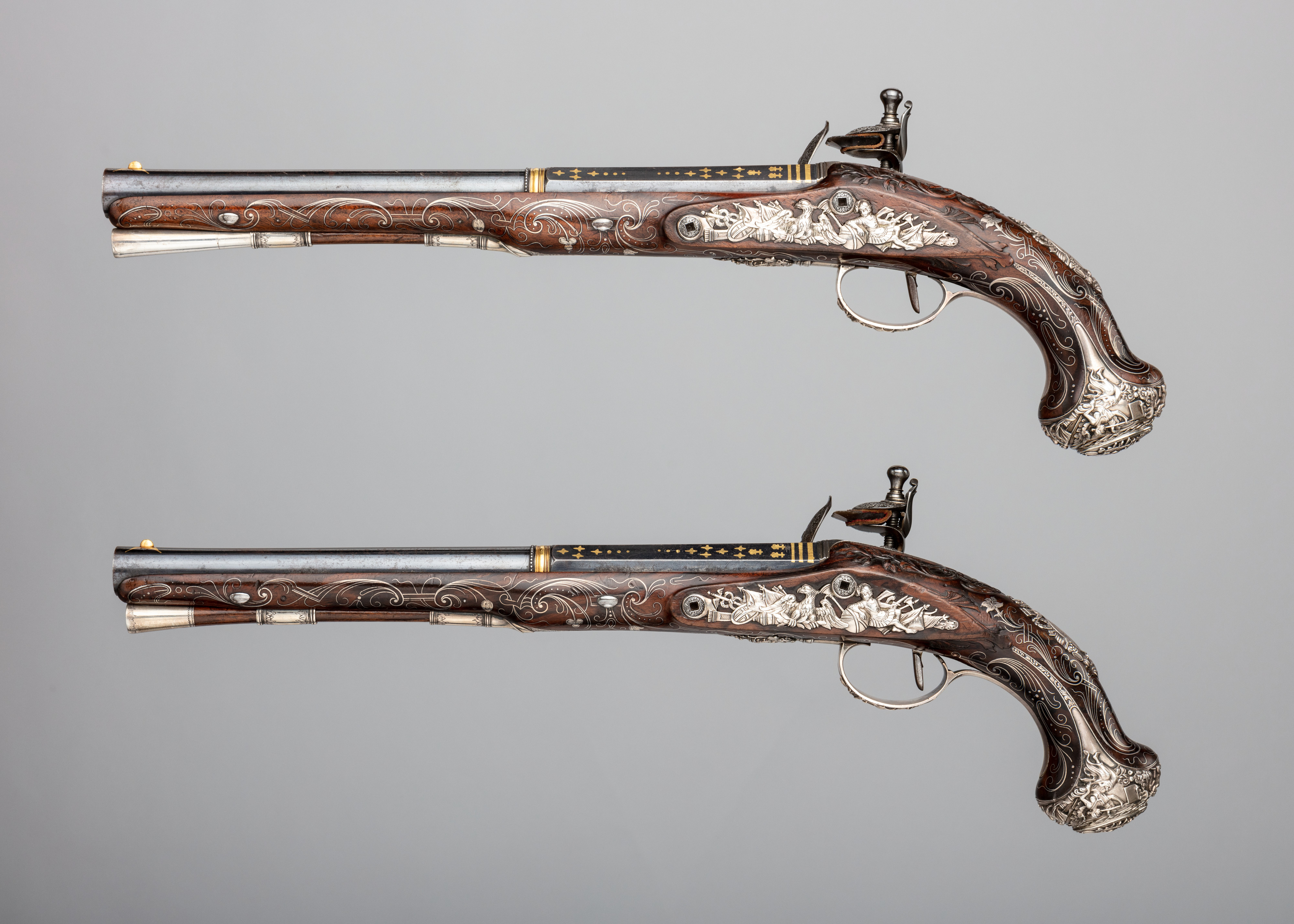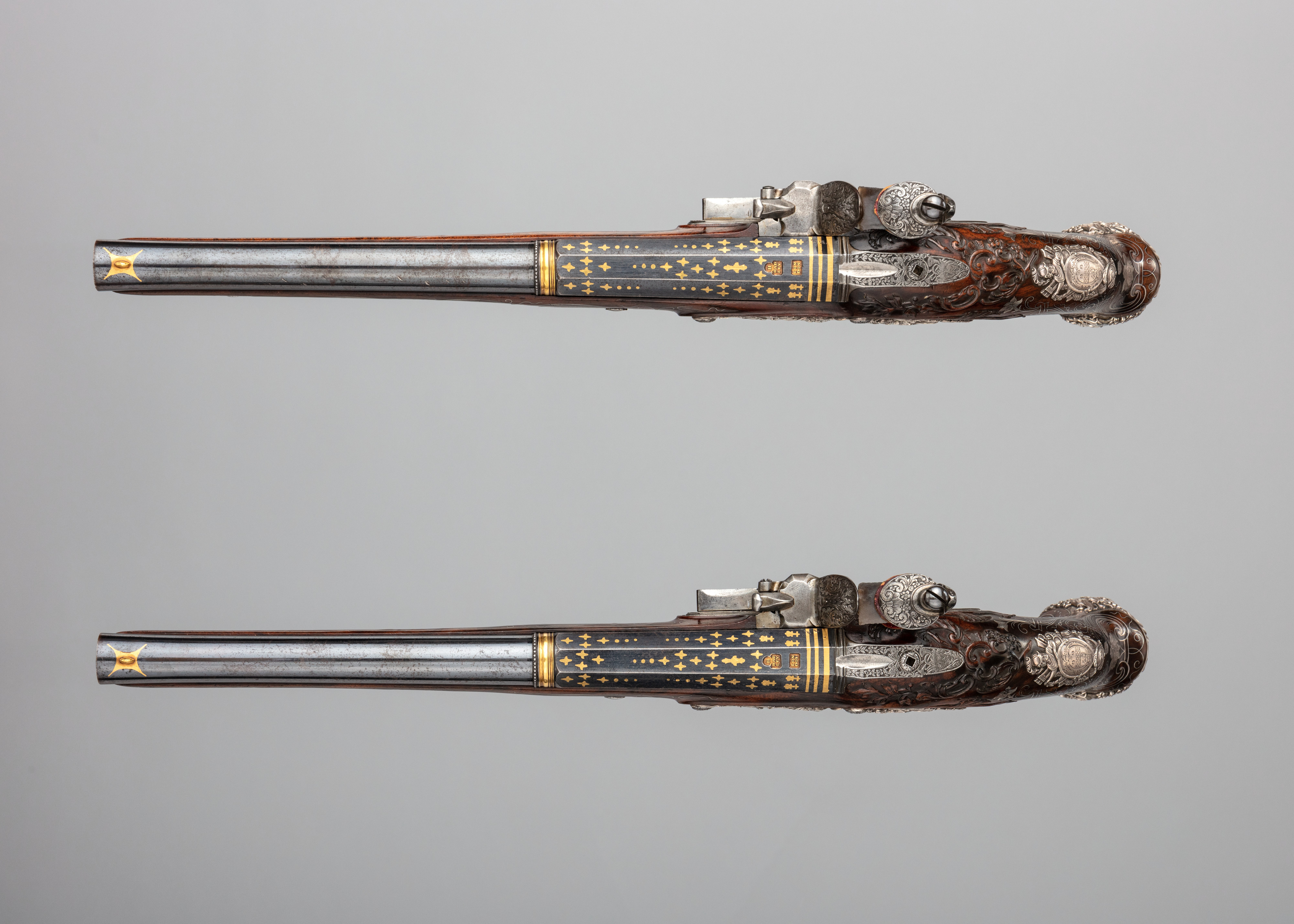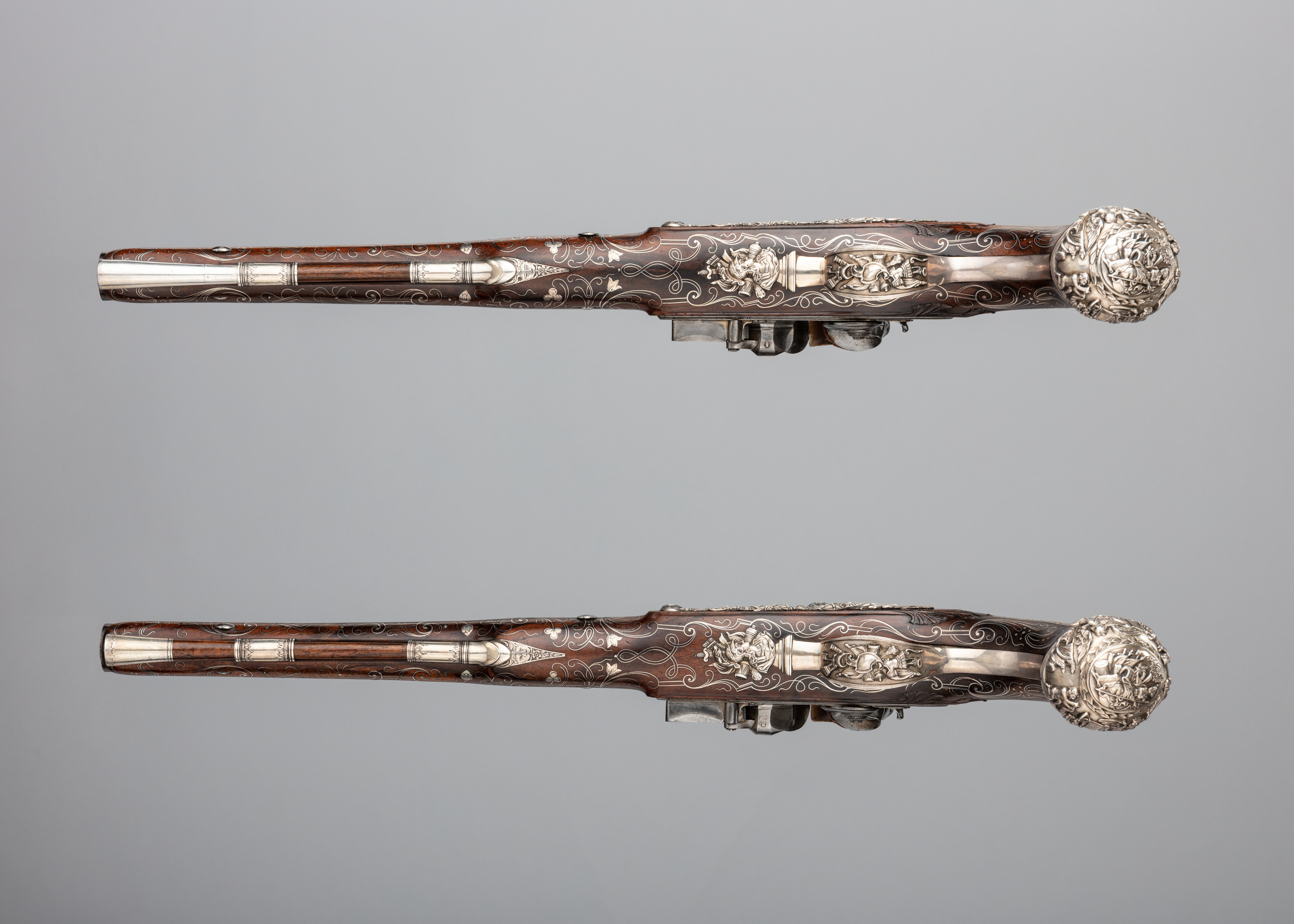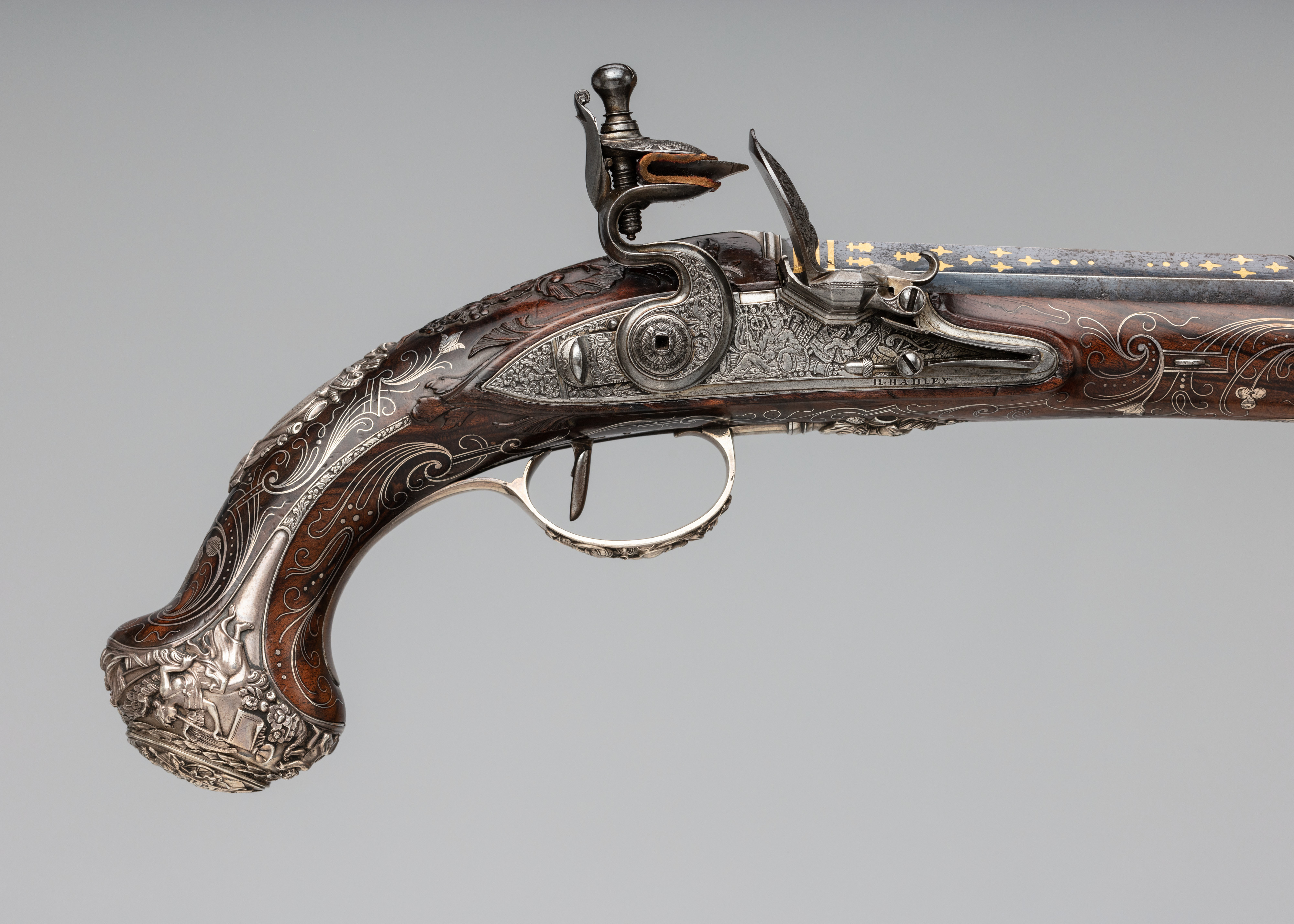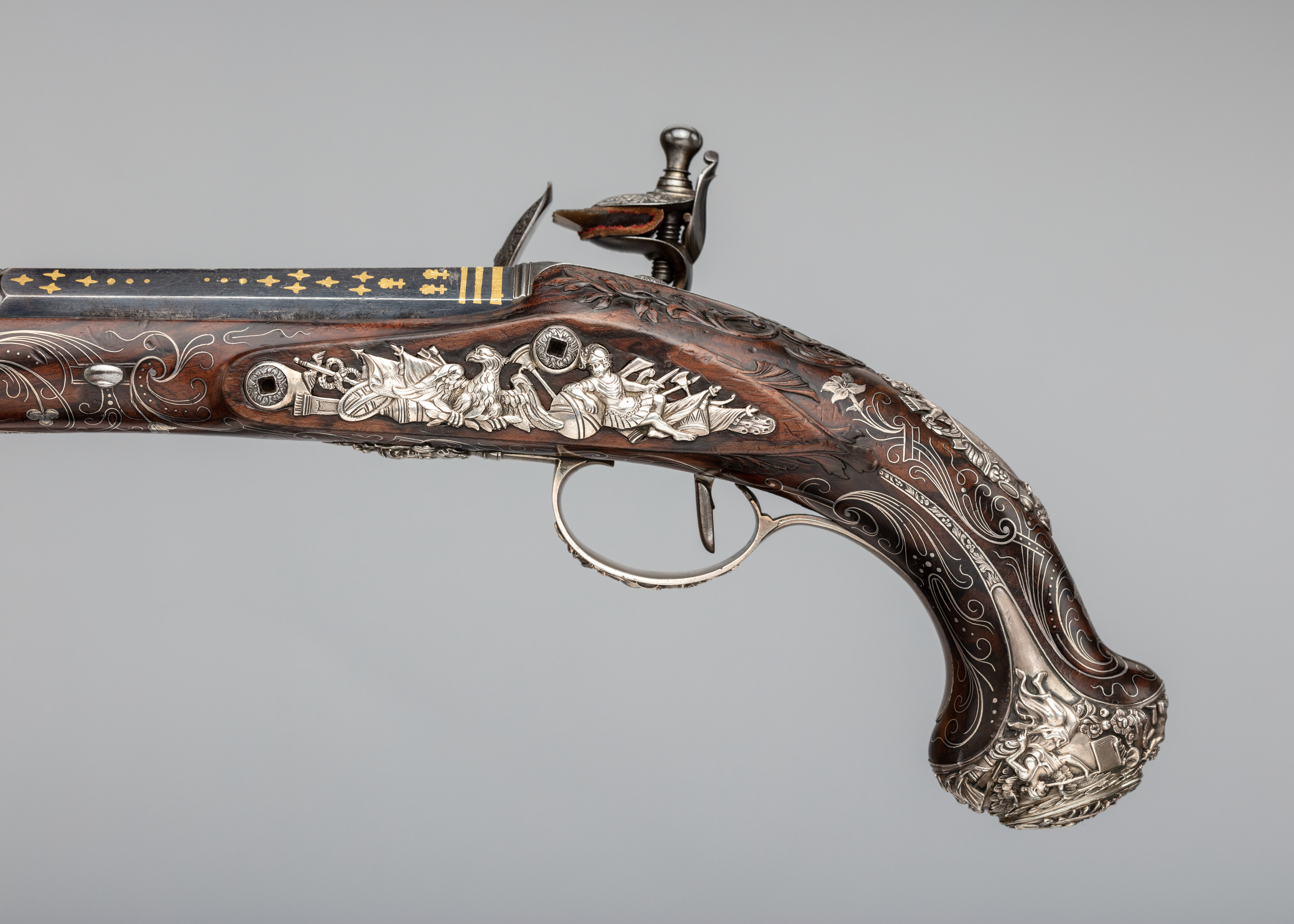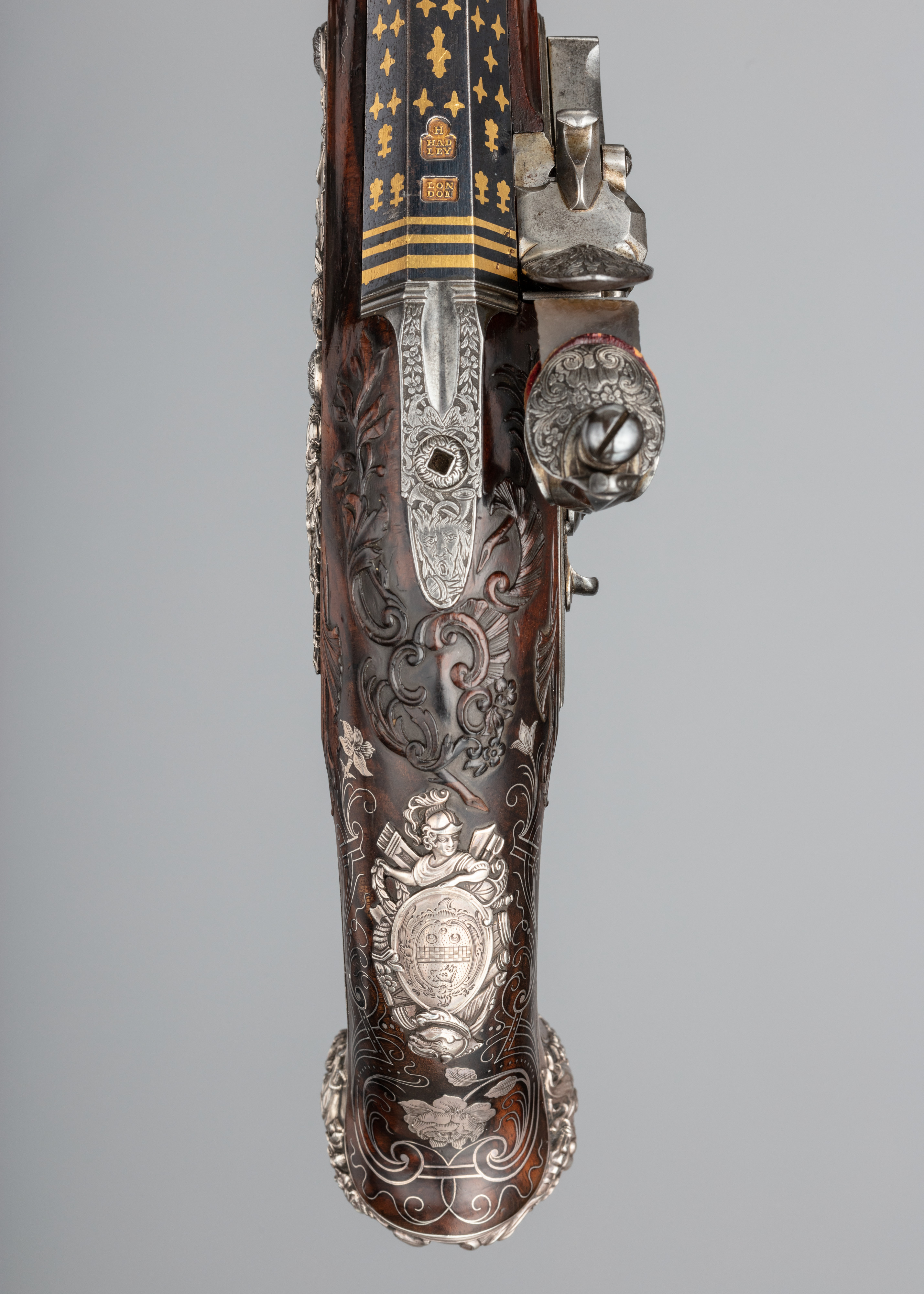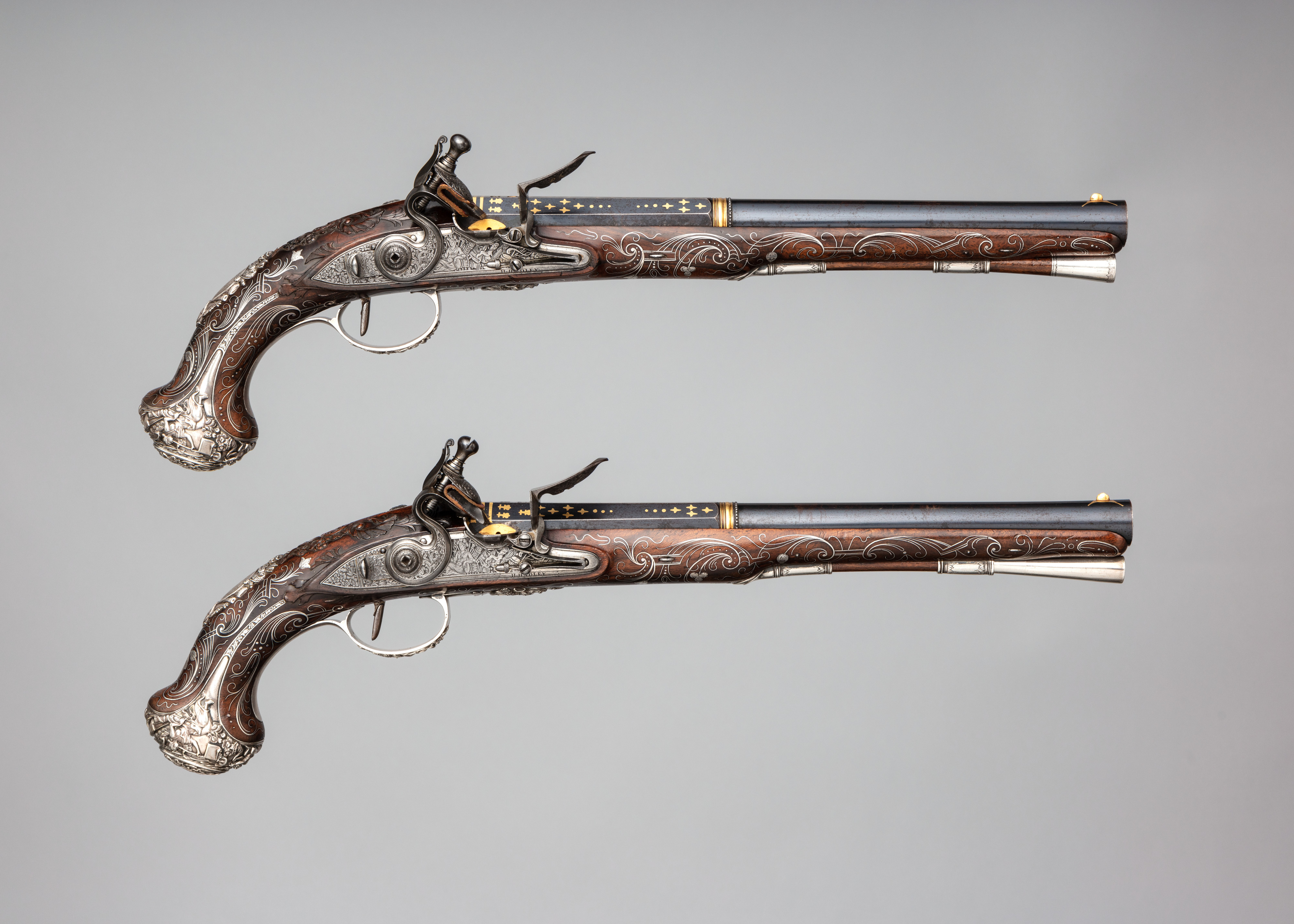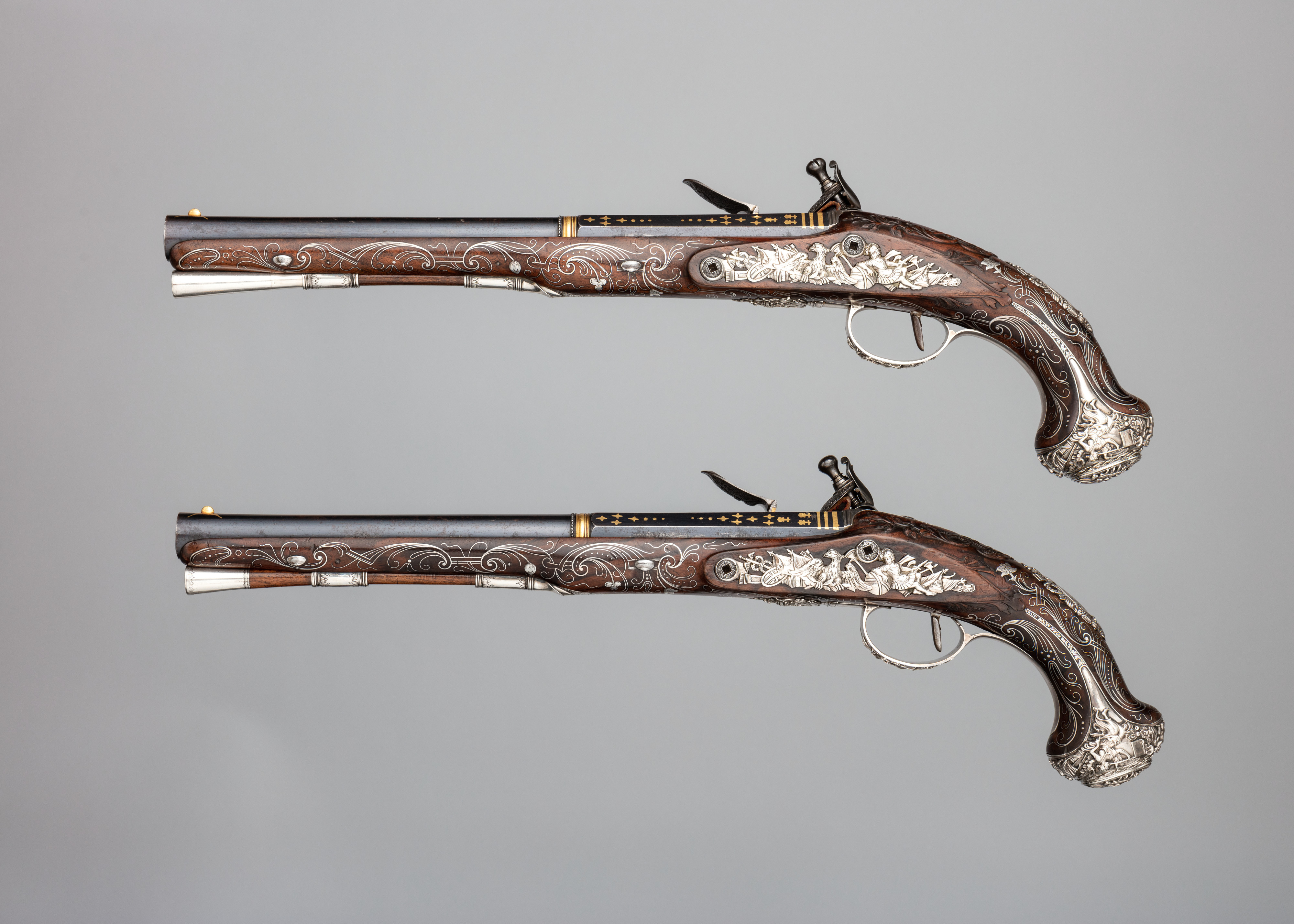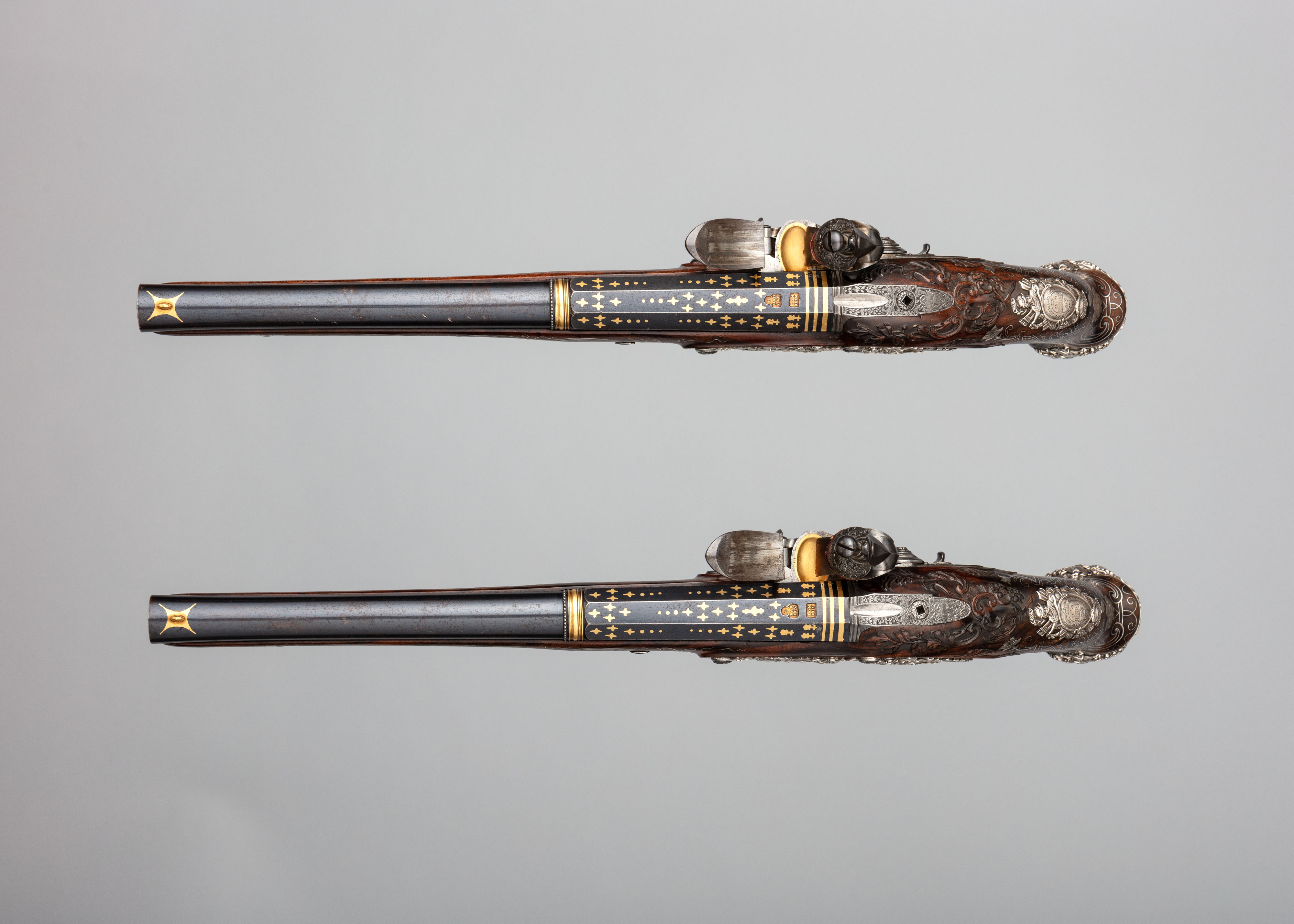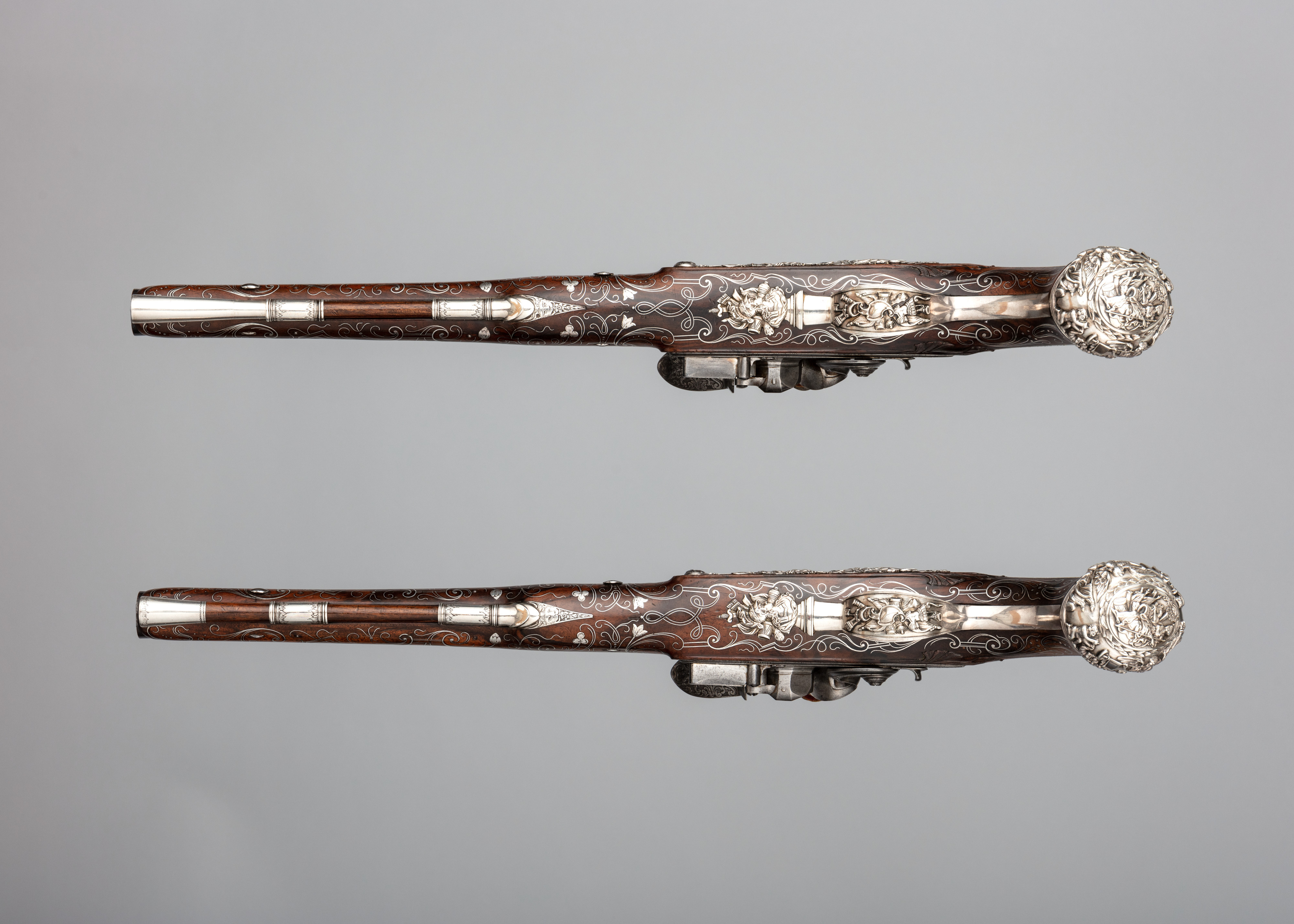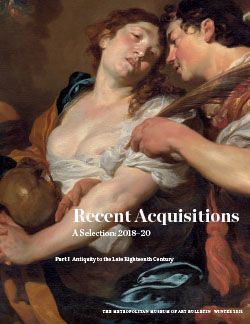Pair of Flintlock Pistols
Gunsmith Henry Hadley British
Not on view
This pair of pistols ranks among the most refined and elaborately decorated firearms made in England in the third quarter of the eighteenth century. It stands as one of Henry Hadley’s greatest achievements, representing a remarkable unification of separate crafts, including engraving, wood carving, inlay, silversmithing, lock making, and barrel forging. Hadley, a London gunmaker who catered to the upper echelons of British society, including the royal family, made the pistols for a member of either the Clerk family of Penicuik or the Clerk family of Comrie Castle, both in Scotland.
First recorded in 1734 working in East London, Hadley went on to work as a contracted setter-up for the Board of Ordnance and later lead a successful workshop in the posh Charing Cross area of London for over twenty years. He may have been directly responsible for the manufacture of certain parts of these pistols and their decorations. However, as the master of his workshop he probably served primarily as the assembler of parts, called a stocker or setter-up, the individual components of his guns being made to his specification by a specialist barrel-forger, lock maker, steel engraver, etc., under his supervision, as was traditional in fine English gun shops in the eighteenth and nineteenth centuries.
The pistols exemplify Hadley’s cosmopolitan approach to embellishment. Their deeply blued barrels are stamped and inlaid in gold H/HAD/LEY and LON/DON in the style of contemporary Spanish barrels, which were renowned for their accuracy and beauty. Specifically, the form of the marks and surrounding decoration emulates those of the Madrid gunmaker Geronimo Fernandez and the Barcelona maker Pedro Esteva. Markings on the undersides suggest they may have been made by Hadley himself.
The walnut stocks, carved in relief with foliate scrolls and comprehensively inlaid with fine silver wire and plaques adorned in the rococo style, rival premier French workmanship of the period. The engraving on the flat-faced locks may be the work of professional engraver William Sharpe (d. 1786), one of two executors of Hadley’s will.
The silver mounts are unmarked. The escutcheons are engraved with the arms Or, a fess chequy of four lines argent and azure between two crescents in chief and a boar’s head couped in base; a crescent for difference. Unfortunately, due to errors in the arms the pair’s original owner may not be identified with certainty. The pistols have long been thought to have belonged to Sir George Clerk, fourth Baronet Penicuik (d. 1784).
The Museum’s pistols are one of four similar pairs made by Hadley. Two pairs without silver wire inlay preserved in the Royal Collection at Windsor Castle (acc. nos. RCIN 67182; RCIN 67263) were part of the collection of George III (1738–1820), one bearing his crest when Prince of Wales (acc. no. RCIN 67182) and marked for 1758–59. The third pair, in the Royal Armouries in Leeds (acc. nos. XII.1645, XII.1646) bears the family arms of George Spencer, 4th Duke of Marlborough (1739–1817).
Due to rights restrictions, this image cannot be enlarged, viewed at full screen, or downloaded.
This artwork is meant to be viewed from right to left. Scroll left to view more.
